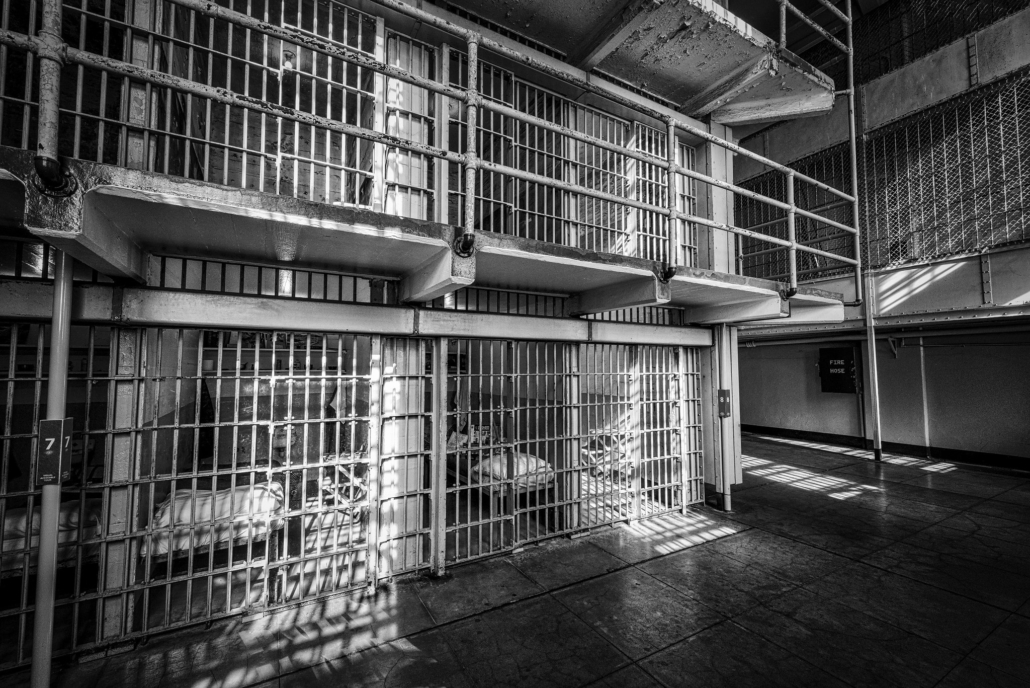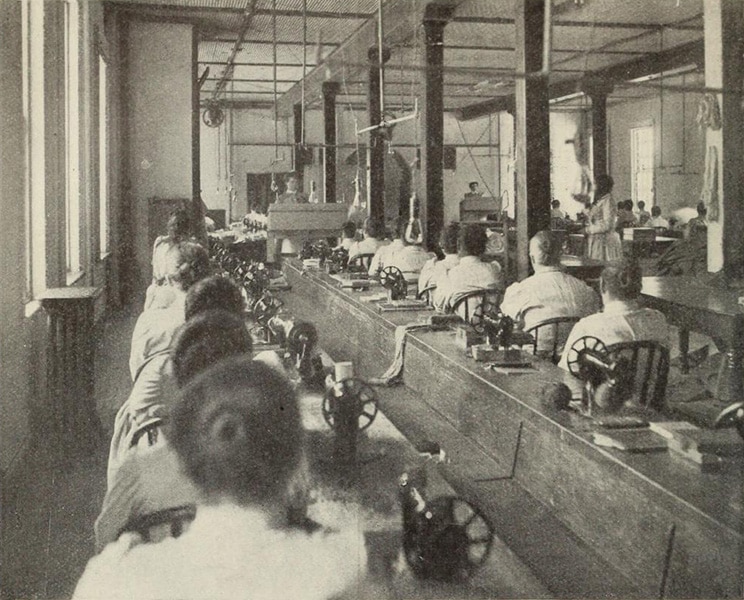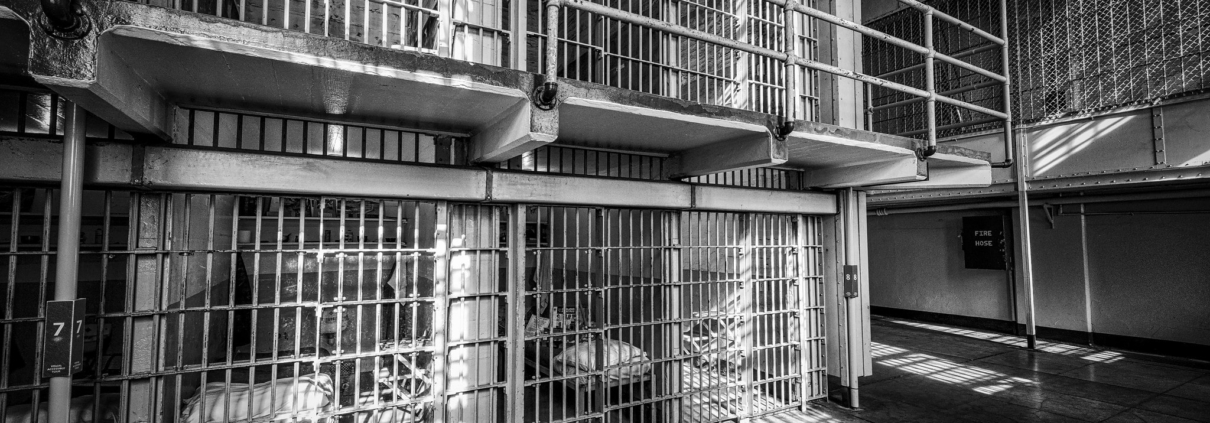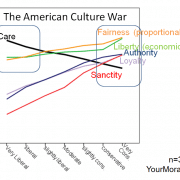The Invention of Incarceration

As a young girl growing up in Northern California, Ashley Rubin dutifully said her prayers each night before going to sleep. She routinely included what she now sees as a strange request: that all bad people go to prison.
“Here’s this 8-year-old child who is not really old enough to understand the significance of any of this but knows that sending people to prison is just what we do,” says Rubin, who’s now a sociologist specializing in US prison history at the University of Hawai‘i at Mānoa. The idea of punishing criminals with time in prison is so ingrained in our culture, she says, that most people assume that prisons have always existed.
But they haven’t. For most of Western history, long-term incarceration wasn’t used as punishment, and many countries even had rules against it, Rubin says. “The idea of confining people for long periods of time as punishment was really quite revolutionary.” Her research involves combing archives for records, letters and other documents on the early history of prisons, and along with other scholars she argues that prisons as we now know them first arose in the nascent United States, shortly after the Revolutionary War. (Jails, used for short-term confinement, have a much longer history in Europe and around the world.)
The biggest lesson of prison history is how prisons keep failing us and yet we keep using them anyway.
Prisons were controversial from the start, and over the last 230 years the public conversation about them in the United States has taken many turns. At first, Rubin says, they were billed as a humanitarian achievement — a more effective and more humane way to punish criminals than corporal and capital punishment. But their purported goals have shifted with time, with varying degrees of emphasis placed on protecting the public by taking criminals out of circulation, punishing them for their crimes, rehabilitating them into better citizens and serving as a deterrent to other would-be lawbreakers.

When prisons fail to rehabilitate criminals or reduce crime, or when they end up costing more than the public wants to pay, conversation tends to be about that particular issue—and not about the inherent limitations of prisons as institutions, says Rubin: “I’m not an abolitionist, but I can’t look at the history of prisons and not think, why are we still using them?”
Rubin thinks we have unrealistic expectations when it comes to prisons, expecting them to do too many—and often contradictory—things. She spoke about the early history of prisons and how it could inform current discussions about prison reform. This conversation has been condensed and edited for clarity.
How would you characterize the public debate over prisons today?
It’s a weird time. It’s very messy. We’re in this moment of transition. On the one hand, activism is big right now—there are calls to defund the police, more public talks, big books getting published about abolishing prisons. There are also discussions in mainstream newspapers about how abolition is more complicated than just getting rid of prisons; it requires reimagining society in a way that addresses the major oppressive structures that contribute to criminality and necessitate punishment. We’re seeing more people in the mainstream talk about abolition of various criminal justice institutions than I had expected to see in my lifetime.
On the other hand, that’s still a small group overall. And we’re experiencing massive polarization. At the same time that prison abolitionists are making headlines, other folks—mostly Trumpian Republicans, but also some self-identified conservative criminologists—argue that we need more prisons to keep society safe from violent criminals. Any time there’s an increase in crime rates, they see it as evidence that we need more incarceration, rather than looking at what type of crime we’re talking about and what’s really causing it.
When and where did the first prisons arise?
The first actual prison is the Massachusetts state prison that opened in 1785, just after the American Revolution. Then came Connecticut in 1790 and Pennsylvania in 1794. Those are the first three state prisons in the world.
Weren’t people getting locked up way before the late 1700s? I’ve seen it in movies!
Yes, but those were jails, not prisons. There were, for example, workhouses in England and the Netherlands in the 16th century that held a big mix of people, including vagrants, debtors and prostitutes. Even orphans in some cases. People who had done minor things or hadn’t necessarily been convicted of a crime, or were being held awaiting trial, or until they paid a fine or for other administrative purposes. Some scholars have argued that those were the first prisons, but in my view they were more similar to what we would call a jail today. Jail is basically a short-term holding cell, not a place of punishment, and we’ve had that throughout history.
If you think of prison in the way we use the word today, that idea is pretty new. I would define it as a place designated for punishment of people who have been convicted of typically serious offenses, and their punishment is long-term confinement, usually more than a year.
What was the rationale that led to their founding?
Deterrence. A big concern at the time was that the existing punishments were actually causing more crime. The fear was that people would go to an execution and get blood lust and want to go kill people themselves. Prison advocates argued that people would hear scary stories about prisons, and the thought of being locked away from friends and families would terrify them into never committing a crime. Simultaneously, there was this movement to reform jails because the conditions were just terrible, grotesque even. There was a lot of fighting and corruption, and they were hotspots for disease. Those ideas kind of came together—the desire for a new type of punishment, and the need to reform the jails—and paved the way for prisons as we now know them.

Was rehabilitation ever part of the goal?
That was another part of it. Prison advocates also thought that incarceration would be good because it would remove people from their bad environments. If you have a family that’s not treating you well, or you’ve run away from an apprenticeship and fallen in with people who are a bad influence and you have access to alcohol, the idea was that they just needed to remove you from that environment and put you into a good, clean, moral environment.
All the early prisons, for over a century, involved hard labor. They thought, “Criminals are lazy, so let’s teach them discipline and put them to work.” But there was also a little bit of recognition that people just hadn’t been trained in a particular vocation, so they needed to be trained to do the work. There were additional educational and religious overtones. So, if people were illiterate, they were taught to write, and they were given moral guidance, which oftentimes was religious.
How long were sentences in the early days of prisons?
They typically were about a couple years. The average wasn’t that different from today, interestingly enough, except that there weren’t very long sentences or life sentences. The longest sentences would be like eight to 12 years in the early days.
How did solitary confinement begin?
The first prisons were mostly dormitory-like facilities. They were cleaner and better run than the jails had been, so they were much better at reducing disease. But by the 1800s or 1810s, people were starting to become concerned that putting prisoners together was allowing them to infect each other with their criminality—that people would go to prison and become savvier in their criminality. In the first generation of prisons, solitary confinement was sometimes used as punishment, but at the beginning of discusions about the second generation of prisons, many wanted to use solitary confinement for all prisoners.
Was that controversial at the time?
There was an epic debate about the humaneness of all this that got going in the 1820s. It focused on two prisons, with different approaches to the problem of how to use solitary confinement and not kill prisoners or make them go insane. At Auburn State Prison in New York, prisoners worked in a large workshop during the day, but they weren’t allowed to talk or even look at each other. They were socially but not physically isolated. In the evenings they were confined to tiny individual cells. In contrast, at Eastern State Penitentiary in Philadelphia, prisoners were kept in solitary confinement around the clock, but they had rooms that were big enough for them to work in and access to a small private yard for fresh air. They were allowed to talk with prison staff and receive occasional visits from penal reformers in the local community, but they were not allowed contact with family, friends or other prisoners.
The Auburn system won out. The decision ultimately hinged not on which system was more humane but on the perception that the Auburn system was more cost-effective and profitable. It used smaller cells, which were cheaper to construct, and factory-style labor, which was generally considered more efficient. Auburn wasn’t actually more profitable, but people believed it was. By the 1850s every state except for Pennsylvania had adopted the Auburn system. At that point, there’s just no more controversy—prisons were here to stay.
Subscribe to the Ethical Systems newsletter
How can the history of prisons inform our discussion about it now?
I think the biggest lesson of prison history is how prisons keep failing us and yet we keep using them anyway. We’ve always had an overly optimistic idea about what they could accomplish, but we kind of are OK with it when they’re just barely doing what they’re supposed to do, or even when they massively fail. We keep thinking, “We can fix it.” We convince ourselves that the problem isn’t prisons per se, it’s the model of prison we’re using, or the way we’ve implemented it, or the resources we gave it, or the people who are running it. But we haven’t looked at the history of prisons and really taken seriously what’s causing all these failures. We haven’t looked at the inherent limitations of prisons and whether they can actually accomplish all the goals we set for them.
We tell people who run prisons to keep their prisoners and staff safe and healthy, but to do it within a budget and certain rules that may not be realistic. For example, we tell people who run prisons to make sure the prison experience is not exactly fun, and maybe to make sure prison feels like punishment, and maybe to rehabilitate them, and definitely to keep prisoners inside so they can’t hurt people on the outside. Basically, we tell prisons to do too many things, and it’s not like we give them all the tools they need to do any of these things.
If we want to make prisons better, we need to think more carefully about what we actually want prisons to do, give consistent messages about that, and stop piling on conflicting goals that make it impossible for prisons to live up to our overly high expectations.
So that’s the conversation you think we should be having?
Honestly, I think the conversation we should be having is not one about prisons. If we’re talking about prisons as a tool for rehabilitation, you can have the best-designed prison, and it will be virtually meaningless if people released from prison face the types of challenges on the outside that they face now: the inability to receive various kinds of governmental assistance, prohibition from getting certain types of jobs (including jobs they were trained for while in prison), difficulty getting most jobs because of background checks and discrimination against people with criminal records, a slew of fees and fines they still need to pay, not to mention the lack of help finding a place to live and transitioning to the outside world. They have a very tight rope to walk to not return to prison.
If we want to prevent crime and we’re talking about punishment, we’re also having the wrong conversation. If deterrence worked well for crime reduction, we would have more evidence that it works, but we only have weak and mixed evidence. If you want to prevent crime, you have to intervene before the crime happens.
I think the right conversation to be having is one about social policies and the things that actually work to prevent crime. Things like education, universal basic income, childcare, shoring up health care, early childhood nutrition — all these things that have nothing to do with crime directly, but benefit everyone in society.
Greg Miller is a science journalist based in Portland, Oregon.
Lead image: Geoff Livingston / Flickr

This article originally appeared in Knowable Magazine, an independent journalistic endeavor from Annual Reviews.









